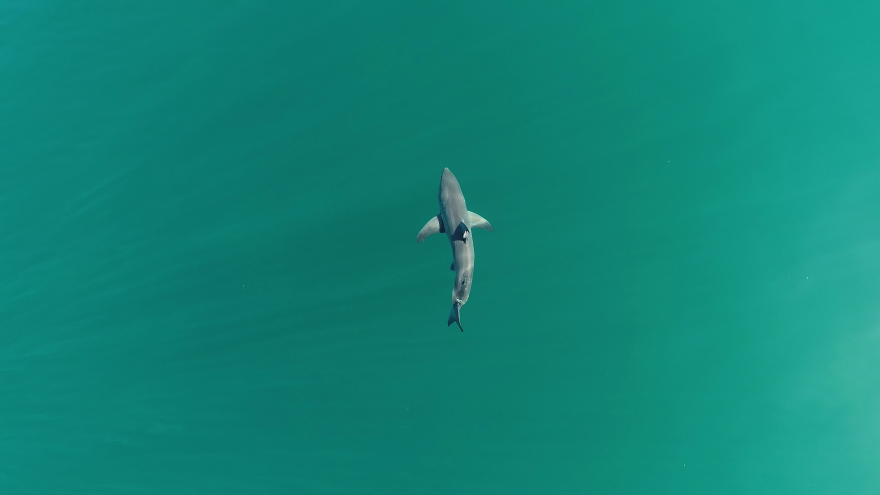Truth matters. Community matters. Your support makes both possible. LAist is one of the few places where news remains independent and free from political and corporate influence. Stand up for truth and for LAist. Make your year-end tax-deductible gift now.
Check out live sharks and learn ocean safety tips at Cal State's Shark Lab on Saturday

It's not a surprise, there may be sharks sharing the ocean with you. But don’t worry, there are ways to enjoy the water and stay smart out there.
Cal State Long Beach is inviting the public to its Shark Lab on Saturday. The lab studies shark behavior — mainly in the waters from Monterey Bay to San Diego — and works to demystify perceptions of great white sharks, one of the most common in SoCal waters.
Saturday’s open house between 10 a.m. and 3 p.m. will provide the public with tours of the facilities and an opportunity to see these awesome creatures live.
“Our main mission is really to study the behavior and ecology of sharks and [there] physiology,” said Chris Lowe, professor of marine biology and director of the Shark Lab at Cal State Long Beach. “But the other part of our mission is really to get that scientific information out to the public.”
What the lab does
The lab studies all types of sharks, game fish and stingrays. It also helps the state to determine big marine protected areas for various species.
With the growth of the white shark population, the lab received state funding in 2018 to develop a shark beach safety program.
“We were working with all the ocean lifeguards who were going, ‘OK, where are all these white sharks coming from that are hanging out on our beaches? How long are they going to be here? When are they going to leave and do they pose a risk to the public?'” said Lowe.
Movies like the Steven Spielberg classic Jaws have driven negative perception of sharks, portraying them as ferocious beasts that will eat humans. Unprovoked white shark attacks on humans in California are rare. Lowe said on average there are 3 attacks each year, the majority of which are attributed to white sharks.

“If you’re going to the beach and you’re worried about sharks, learn what species are there. It's not like Jaws out there and it’s not like Discovery Channel Shark Week,” Lowe said.
The lab has tagged about 240 sharks, and tracks them using underwater sensors and buoys. Currently, the lab maps the location of sharks, and Lowe said in the future, the hope is that they'll be able to share that data in close to a real-time basis with the public.
How changing climate impacts sharks
In the last decade, one thing the lab noticed was that warming ocean temperatures have driven shark breeding and feeding to the north, in addition to other marine life that the lab studies.
Prior to 2015, there had been no breeding areas for the white shark in Monterey Bay, according to Lowe. But since the implementation of the Clean Water Act and other federal climate legislation in the early 1970s, California’s water has been getting increasingly cleaner and populations of whales, fish, seals and sharks have significantly rebounded, and in turn, Lowe says that this has improved both the habitats and the number of prey for sharks.
Beach safety this summer
If you do encounter a shark at the beach this summer and if the shark is acting aggressive, Lowe recommends giving it a “bop” on the nose, so the shark knows you will fight back. If it's just close in proximity, keep your eyes on the shark and move your surfboard toward it and it will often just swim away.
“We really don’t know why sharks occasionally bite people unprovoked, the provoked bites are really easy to explain, you know, a fisherman or somebody grabs a shark, gets too close and the animal feels threatened, so they’ll bite,” Lowe said.
How to attend
Shark Lab at Cal State Long Beach Hall of Science
Address: 1250 Bellflower Blvd, Long Beach
Date: July 20, between 10 a.m. to 3 p.m.; beach safety presentations from 11 a.m. to 1 p.m.
Cal State Long Beach Hall of Science, which is located at 1250 Bellflower Blvd, Long Beach, 90840.







